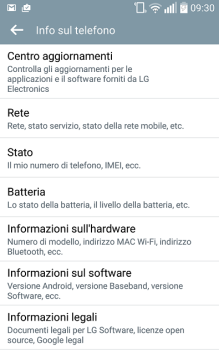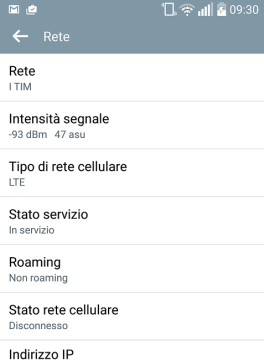
In certain situations, the GSM signal we receive on our Android phone is poor or absent. This can have more than one cause. In this short article we try to give light on the causes of a poor or absent gsm signal and also how we can measure the GSM signal with an Android device in order to improve the situation. If you are not an Androidian we love you the same and we have a dedicated article how to measure GSM signal with iPhone.
- 1. Why do I have a poor GSM signal?
- 2. Measure the GSM signal with Android
- 3. How many dBm is a “good” GSM signal?
- 4. How can I improve the GSM signal for Android?
- 5. What frequencies should the repeater have?
1. Why do I have a poor GSM signal?
Before looking at the solutions we need to look at the causes of poor cell signal. There are a variety of reasons why there is bad reception inside a building, let's consider the three main ones:
- 1.1 - The distance from the base transmission tower
- 1.2 - Factors that block the reception of the signal
- 1.3 - Newly built buildings
1.1 - The distance from the base transmission tower

The GSM signal that is received by your mobile comes from the nearest transmission tower of your operator. The closer you are to the station, the stronger the signal should be, other things being equal. Likewise, the farther away the station is, the weaker the signal becomes. In this last situation it is certainly difficult to receive a phone call or surf the internet with a data connection.
1.2 - Factors that block the reception of the signal

!The frequencies used in cellular networks are unable to pass through many obstacles. Consequently, the GSM signal may not reach your mobile phone. Woods, mountain ranges, on the Scandinavian territory we really have everything!
1.3 - Newly built buildings

The construction of a new building can also have an influence on the reception of the GSM signal. Building materials such as concrete, metal, double glazing are certainly an obstacle and can cause reception problems.
In this case it is easy to notice, in the sense that outside the building we are able to telephone and navigate, at least decently, but the moment we enter inside, the bars disappear.
2. Measure the GSM signal with Android
The number of bars we see on the screen of our Android smartphone tells us how good the signal is, however it does not accurately reflect the signal quality. With the little trick below we explain how to measure the cellular signal. Let's see how.
Schermata 1: Android / Impostazioni

Schermata 2: Android / Rete

3. How many dBm is a “good” GSM signal?
As we see, there is an item called "signal strength" and it expresses a negative numerical value in dBm. The higher and closer to zero this number, the more intense the cellular signal. In the example of the photo we see that the signal intensity is -93 dBm. A normal result, in fact the value generally falls between -120 and -70 dBm. This table can help you judge the goodness of your signal.
- Between -113 e -107 dBm: too low for a reliable connection
- Between -105 e -101 dBm: low signal
- Between -99 e -93 dBm: sufficient signal
- Between -91 e -83 dBm: good signal
- Between -81 e -65 dBm: very good signal
- Between -63 e -51 dBm: too much signal, use a signal attenuator
4. How can I improve the GSM signal for Android?
With the help of a GSM repeater we can certainly strengthen the cellular signal. The repeater takes the external signal and brings it inside the walls of a house or an office, making it possible to telephone where it was not possible or difficult. Each repeater kit also includes the external antenna, the internal antenna and the coaxial cables. The external antenna should ideally be positioned on the roof or as high as possible. The internal antenna, on the other hand, is as big as a pen and screws directly to the device. But let's remember that it is possible to customize the kit according to our needs. If you live in the countryside, for example, it is likely that you will need a more powerful external antenna than the one supplied. For free advice before purchasing, please write us at: info@gsm-repeater-shop.com
5. What frequencies should the repeater have?
Depending on what we would like to improve, that is the calls (2G network), or calls + 3G internet or calls + 4G LTE, we will choose a cellular signal repeater compatible with the frequencies of those cellular networks.
The major Scandinavian operators: Elisa, Telia, Telenor, Tele2, and Tre fortunately use the same frequencies, which are listed below for your convenience:
- 2G network (calls and SMS): 900 MHz (main frequency) and 1800 MHz
- 3G network (data connection) 2100 MHz (main) and 900 MHz
- 4G network (data connection, VoLTE calls) 800 MHz, 2600 MHz, 1800 MHz
For free advice before purchasing, write to us at info@gsm-repeater-shop.com with some contact details regarding the reception problem you are suffering (let's not exaggerate ..) and we will gladly answer you!